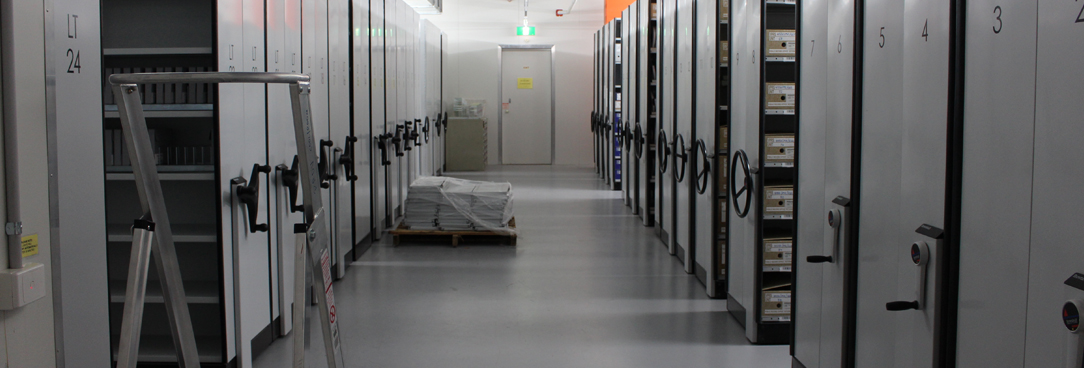
Author: Tara Oldfield
Senior Communications Advisor
Our repository at the Victorian Archives Centre in North Melbourne holds 100 kilometres of records across 12,000sqm and two levels. Tucked away in the corner of the ground level you will find the cool room, also known by staff as ‘the fridge’ – a 276sqm space kept at 6 degrees Celsius and 30% humidity (as opposed to the 20 degrees of the repository and 45-50% humidity). Photographs, negatives, microform, and motion picture films are stored within the cool room to increase their life span by around one hundred years.
Examples of some of the series stored in the cool room include the Public Transport Corporation photographic collection and film reels, the State Bank collection, and Melbourne Metropolitan Board of Works film and photos.
Going into ‘the fridge’
When you order a photograph that’s stored in the cool room, a member of the Access Services staff will retrieve the record and leave it to sit in a middle room between the fridge and the repository.
The record needs to be stored here for 24 hours to bring it slowly down to room temperature, avoiding any damage. If you are ordering photographic records or film you need to keep this in mind as it means your records won’t be moved up to the Reading Room for viewing until after those 24 hours are up. Much different to when ordering paper records which can be viewed by the next pick.
When the Access Services staff have to spend long periods of time in the cool room retrieving or returning multiple records, they put on a thick staff coat to keep them warm. Not necessarily needed in summer when the cool room provides a welcome change from the heat outside!
Digitising images
We have concentrated on digitising glass plate negatives which are generally the oldest and most fragile parts of our photographic holdings.
Although we have scanned over 25,000 glass plate negatives, which collectively take up a little over 80 metres of shelving, that represents only 3% of the space currently available in the cold store, and a fraction of the hundreds of thousands of images preserved there.
You can view our digitised images here.
Material in the Public Record Office Victoria archival collection contains words and descriptions that reflect attitudes and government policies at different times which may be insensitive and upsetting
Aboriginal and Torres Strait Islander Peoples should be aware the collection and website may contain images, voices and names of deceased persons.
PROV provides advice to researchers wishing to access, publish or re-use records about Aboriginal Peoples
